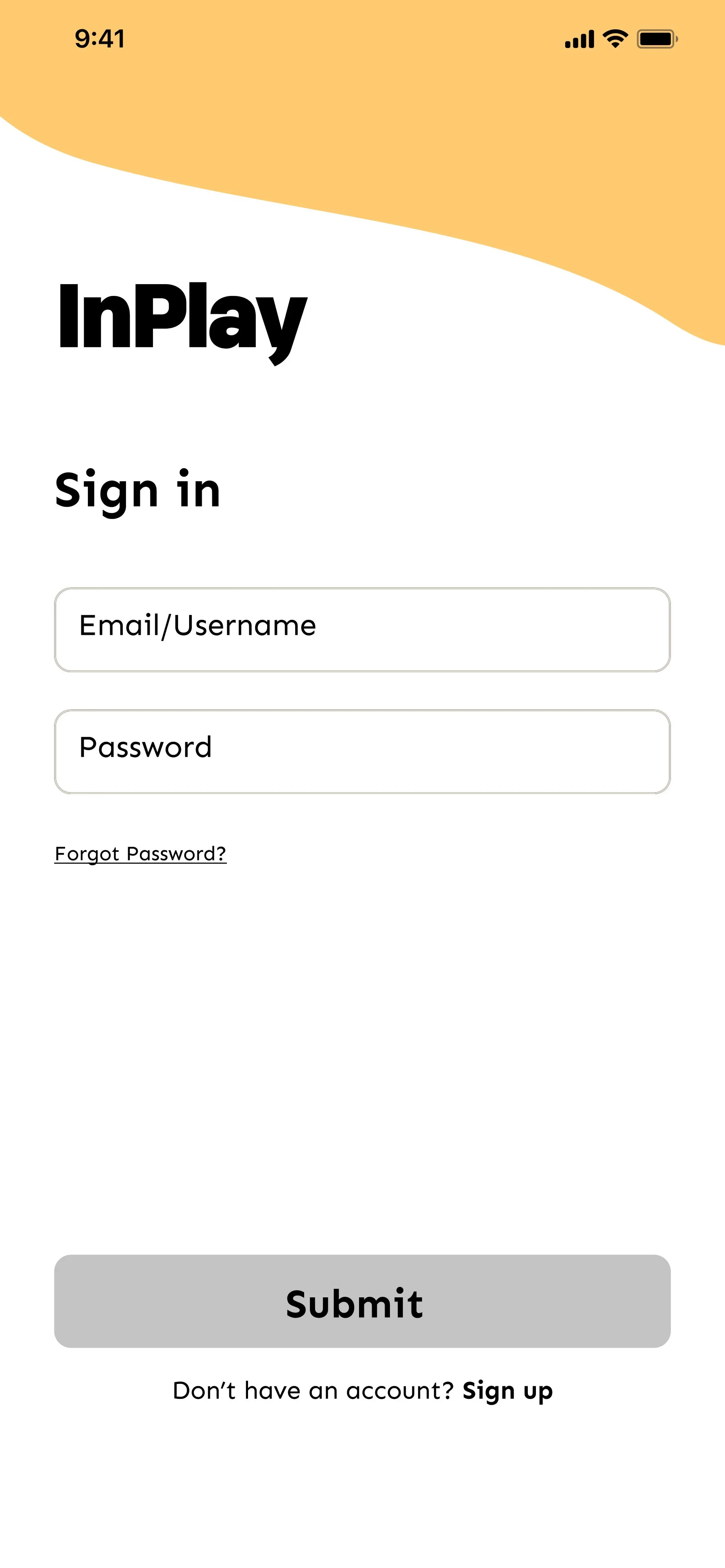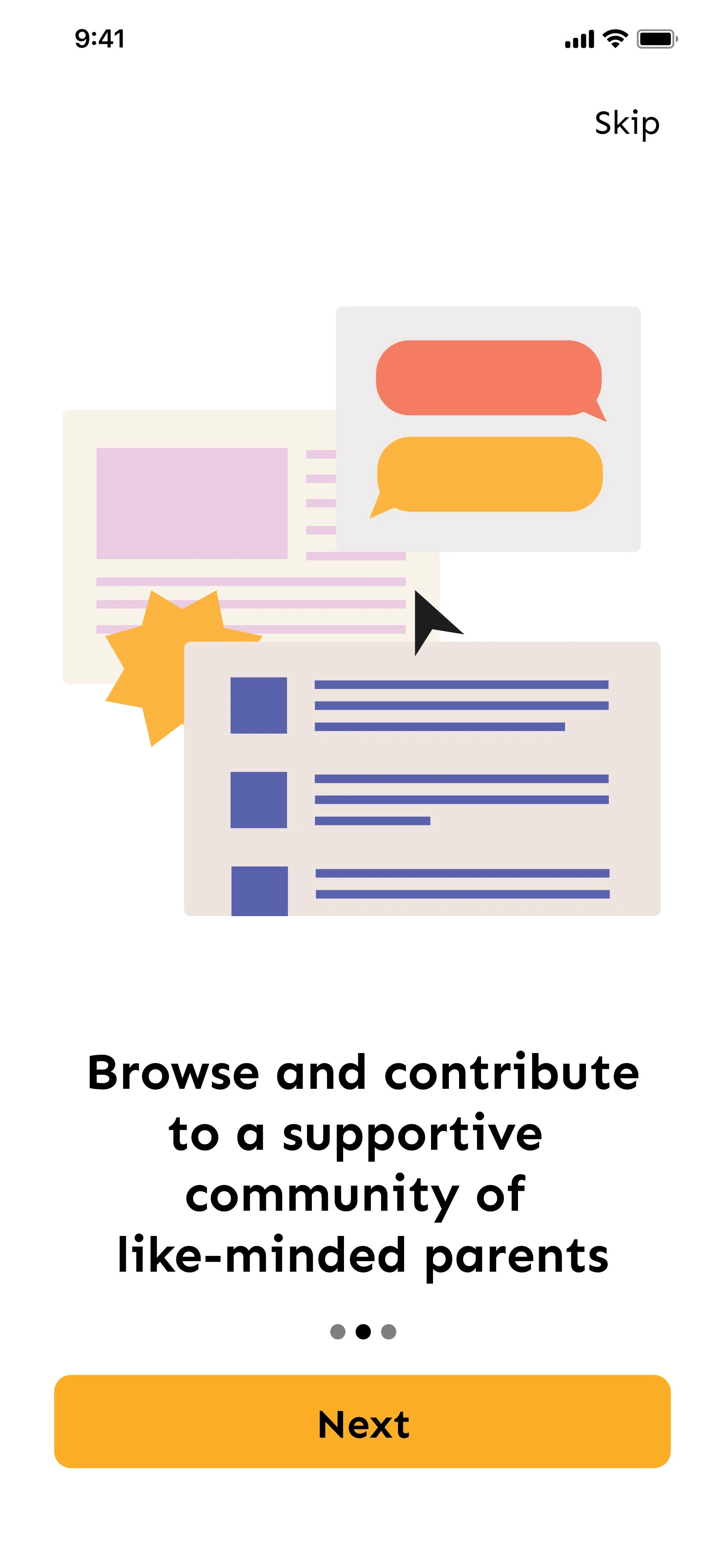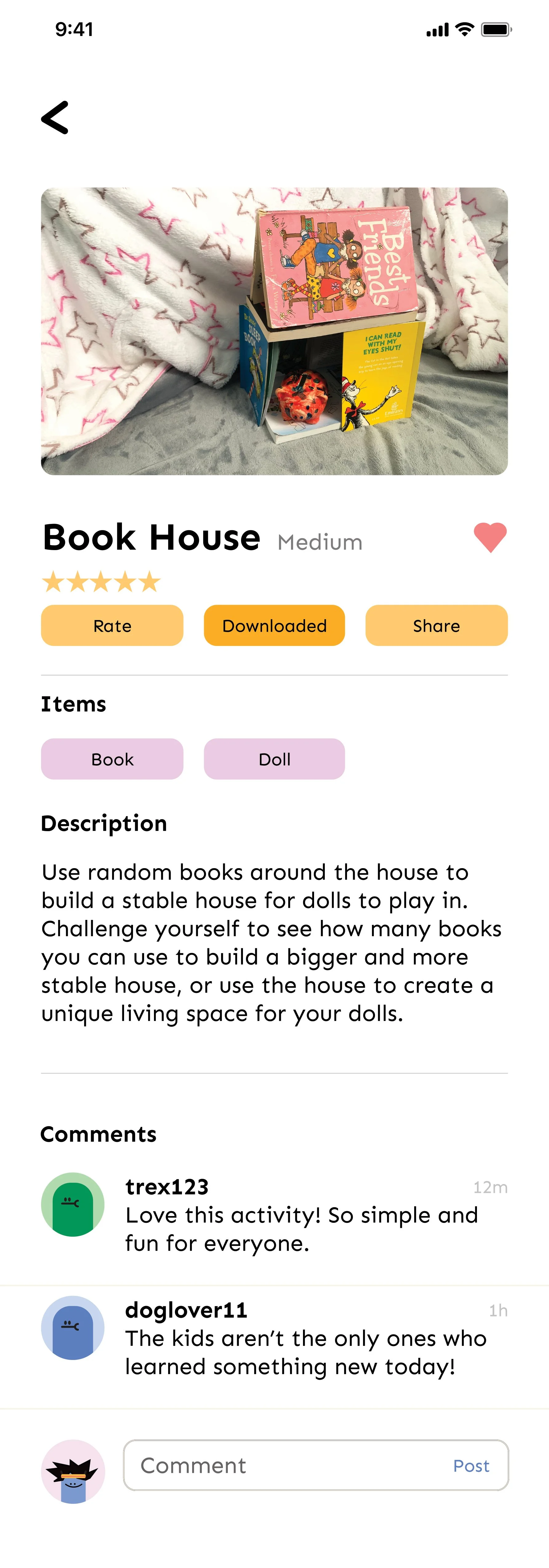
INPLAY
This project was inspired by the RSA brief Press Play, which answered the question of “how might we support all families, carers and communities to play and learn more creatively at home?”


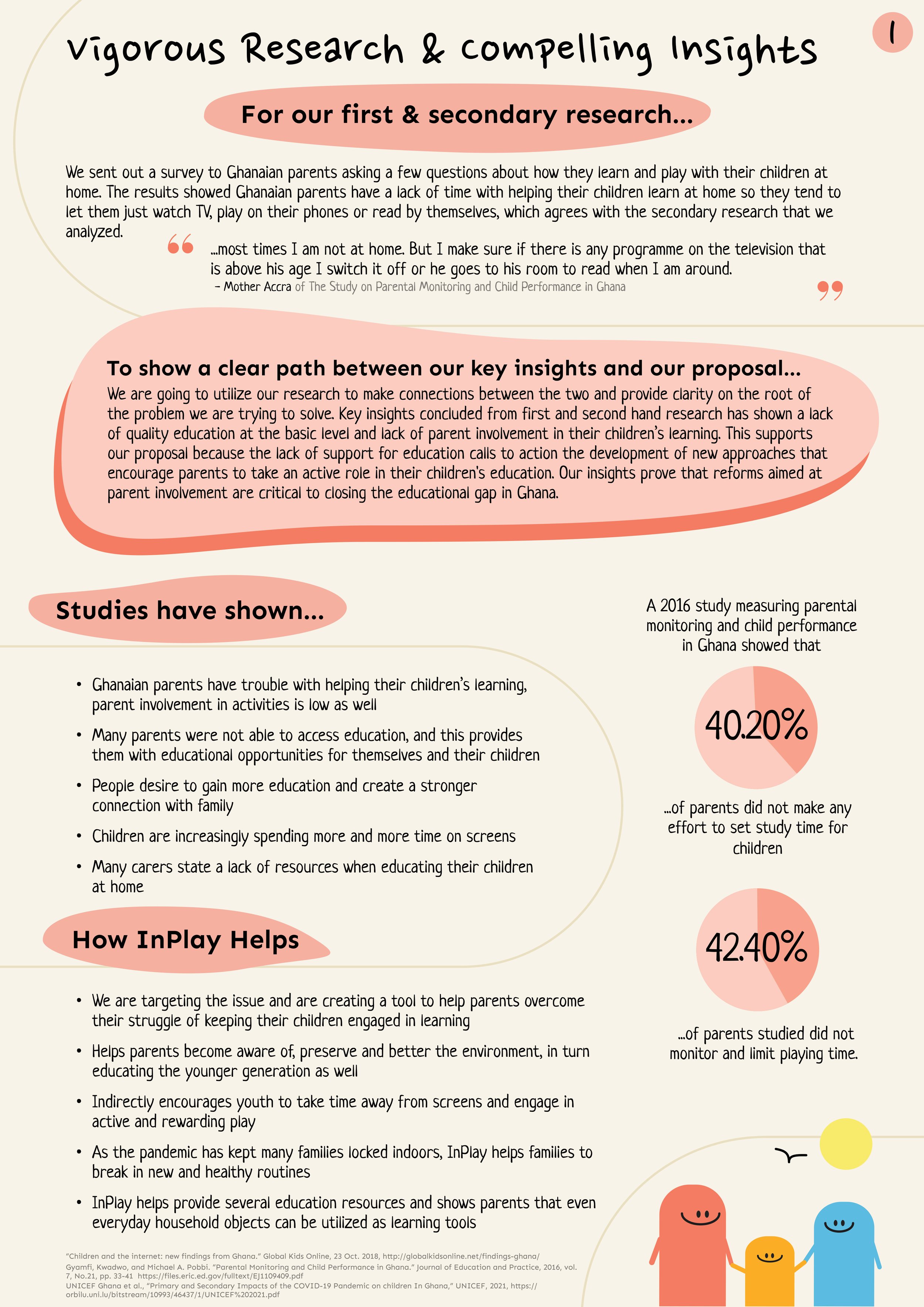
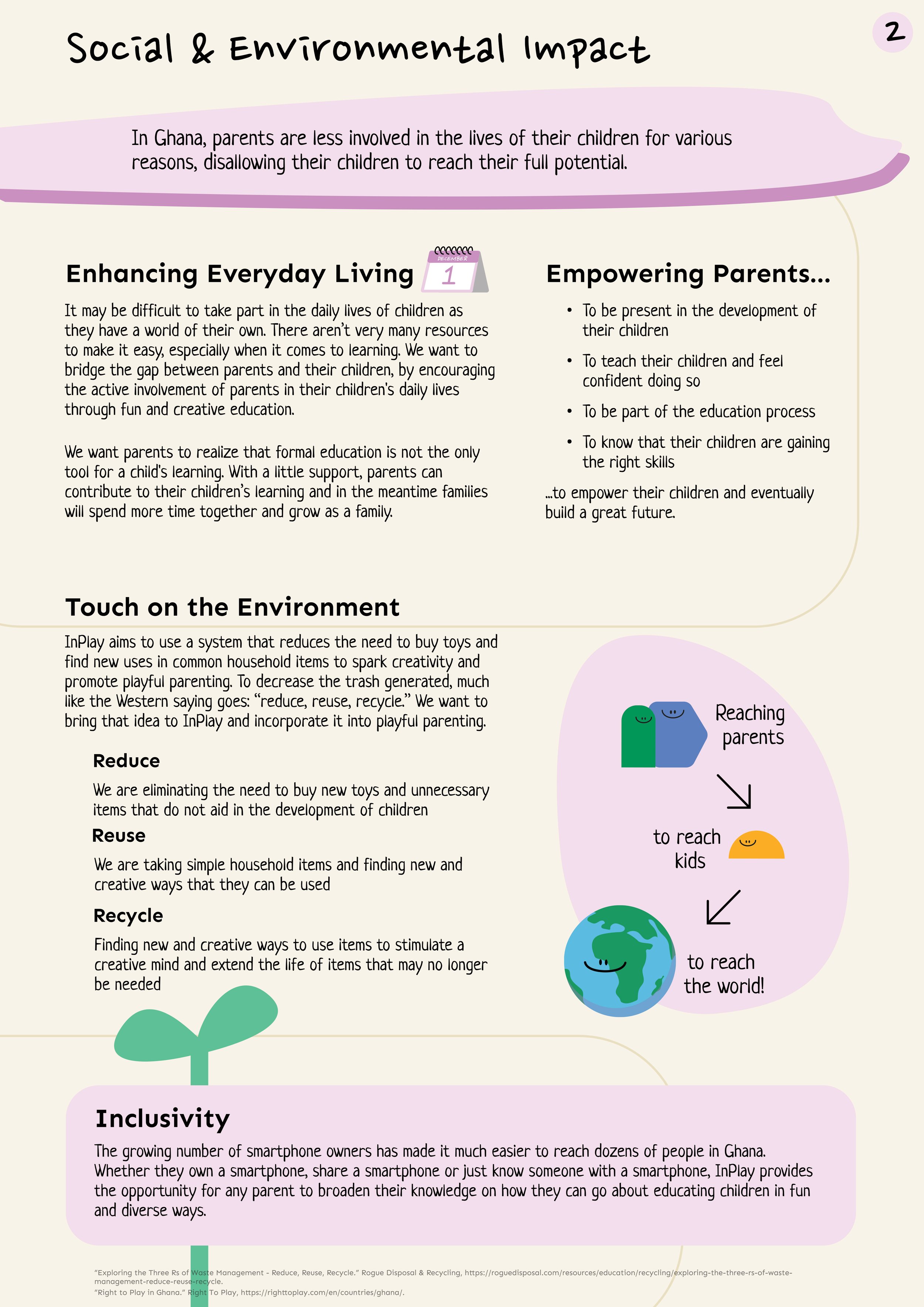


InPlay is an application that allows the parents of young children to inspire children with play using the items around an everyday household.
Process
The team decided to go with the idea of reducing waste and working to improve recycling. We learned that in Ghana, recycling is undervalued, thus we wanted to create something that would have an environmental impact. At the same time, we wanted to encourage creativity in the younger generation, especially now in a time where technology is extremely prominent in the lives of young people.
In the end, the team decided we wanted to make sure parents and carers could be involved with their kids and rather than spending money, they can learn how to use the items in their house to make fun and engaging activities that stimulate their minds, thus also tying in the idea of reducing waste by recycling common household items.
We began our research with the big picture, focusing on studies about Ghanaian households and how parents interact with their families. We found that Ghanaian parents have trouble with helping their children’s learning, many parents were not able to access educational services, people desire to gain more education and create stronger connections with family, children are spending more and more time on screens, and many carers have a lack of resources when educating their children at home. With this research, we were then able to move on to specific research. We sent out a survey to Ghanaian parents asking a few questions about how they learn and play at home. Results confirmed our secondary research, finding that Ghanaian parents lack the time to help their children learn at home so they tend to let them just watch TV, play on their phones or read by themselves.
We tested our prototype by having Ghanaian parents test use it. We sent parents who participated in our surveys a google form embedded with the prototype link. We prepared 6 questions in the form related to a function in the prototype. In the quick form, we asked parents to test the main functions, to complete a few tasks and to explain any challenges that they might have had. We also asked participants to provide overall feedback for improvement.
From the usability testing, we received feedback that our application was quite user-friendly. We did receive feedback to make it even more so and we made changes to our prototype. We made sure to test whether our user interface was accessible.
To do this, we tested the colour and contrast of our app to make it more visible for users with varying degrees of colour-blindness and updated it accordingly. In addition, we made improvements in the consistency of user navigation and the labelling of buttons, such as making the downloads button darker to indicate to the user that the action has already been done. We also labelled the navigation bar and titled the ‘my post’ page.
InPlay utilizes sponsored in-app advertising as its main channel for revenue. Through this method we can remove the cost barrier to purchasing the app and allow free downloads, creating an app that is accessible for all families. This model will be extremely beneficial in supporting our activities if moderated and targeted advertising is used allowing us to accumulate a large user base while gathering useful information on our users. The app will also offer a one-time purchase for the ability to remove all ads. Through this, we can maintain funds for our operations. InPlay will also use and receive funds from sponsorships and grants.
https://www.thersa.org/
wireframes
Prototype





